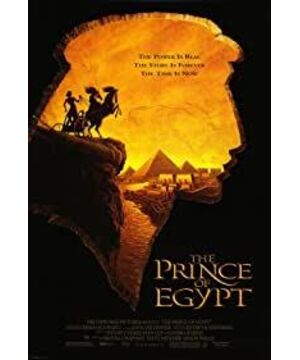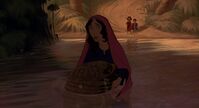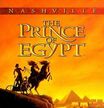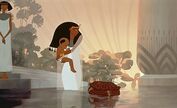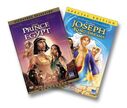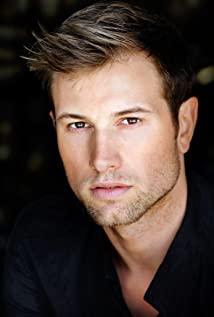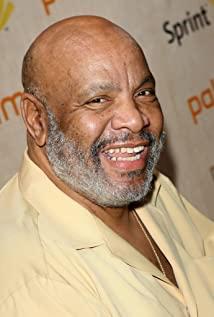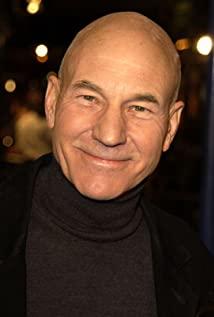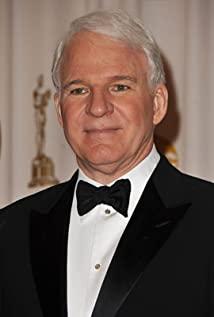The film tells the story of Moses leading the tribe to entrust the Pharaoh to control, showing people's desire for freedom, their devotion to God, and their condemnation of the Pharaoh's oppression. The Hebrews are the descendants of Abraham, but many years later, the pharaoh of Egypt made the Hebrews slaves for his own desires, and did not treat them as human beings. In this case, a hero like Moses was born, and Moses led the way. The Hebrews left Egypt and returned to their homeland. It reflects people's yearning and pursuit of freedom. On the other hand, God is all-powerful. If you want to have a good life, you should devoutly believe in God and not disobey God. This kind of thinking is similar to the devotion to gods in Greek mythology, from which we can also see the influence of Greek mythology on European culture.
Character Analysis:
1. Moses, a naughty, kind, upright, affectionate, kind, pious, responsible, and daring hero. In the film, Moses was modeled as a prince at the beginning, with a sunny appearance, cheerful, naughty, with long hair, and played with his brother. In appearance, he looked like an ordinary prince. Moses grew up in the Egyptian royal palace. As a prince, he was well-loved and naturally a little naughty. Even when he was an adult, he was still a little naive like a child, but he dared to take responsibility for his mistakes. In general, Moses was a carefree child. An occasional encounter with his sister made Moses know his life experience. Moses was very distressed and could not accept his life experience for a while. On the one hand, Moses was used to this kind of carefree life, on the other hand, Moses saw The people of the tribe were suppressed by the pharaoh who raised him and wanted to stand up for the tribe and return to the tribe. At this time, Moses was very contradictory, but Moses' kind and upright heart still made him choose to escape from this place. Being beaten aroused the kindness in Moses' heart, that kind of blood that cannot be destroyed.
After learning the truth, Moses left the palace and began to lead the tribe back under the guidance of God. At this time, Moses matured a lot on the outside and on the inside. On the outside, he grew some beards, and he wore more clothes. He looked very mature. After so much experience, Moses also grew in heart. Under the guidance of God, return to Egypt and negotiate with the new pharaoh. At this time, the relationship between the two has become hostile, and Moses' heart is also very contradictory. His childhood friend, but now the enemy, must be very painful in Moses' heart. However, for the benefit of the tribe, he still had to fight against the new pharaoh to the end. From this, we can see that Moses had a great sense of responsibility, loved his people and his hometown, but also attached great importance to his feelings.
The image of Moses in the film is fuller than the image in the original "Bible". In the "Bible", Moses is a hero. In the film, Moses is not only a hero, but also a man who values love and righteousness. The film adds this point And Moses' conflicting heart every time he makes a choice, I think it's very good, real and natural.
2. Pharaoh, there are two pharaohs in the film. The old pharaoh was more gentle than the one in the Bible. He worked hard and taught his son carefully, but the seemingly gentle pharaoh always had a deep-rooted thought, that is The Hebrews were slaves and did not consider them human. In the same way, the new pharaoh had a good time with Moses when he was young. He seemed to be a good person, but he still had that deep-rooted thought, as if the statue of the pharaoh had always grown on the land of Egypt, and this kind of idea of slavery was also ingrained. The pharaoh on the fresco is the representative of all pharaohs.
Audio-visual language: The picture is mainly composed of yellow, red, blue and black. The tone is yellowish and darker, and there is a sense of oppression. It seems that the scorching sun never sets, and the pharaoh's rule will always exist. There are many symbols used, such as the first paragraph where Moses and the prince race to ride horses. Moses destroys the statue of Pharaoh, symbolizing that Moses will defeat Pharaoh in the future. Pharaoh's oppression of the Hebrews.
In addition, the use of music in the film also adds a lot of color to the film. The song that Moses' mother sang for Moses is the theme song of the film, which is constantly inserted into the film in the form of music or songs. As a song, it has a narrative function and a lyrical function. For example, when Moses heard his sister's singing, he began to doubt his own life experience. , this is the function of narrative, the song sung by the mother sending Moses away has the function of lyricism. The music corresponding to the song appears in the film in the form of a soundtrack. The music is melodious and melodious and is mostly used in memories. This is because other songs often have a lyrical effect, such as the ending song expressing people's longing for a better future. Other soundtracks are also very rhythmic and highly unified with the plot of the picture, such as the dispute between Moses and the new pharaoh, the rhythm of the soundtrack is tight and exciting.
Scene passages: There are several singing passages in this film that are very exciting
1. The first part of the beginning: First, the dark clouds gradually disperse, revealing the yellow scorching sun, and then with the music playing, the rhythm accelerates, and the people on the land are watching Pharaoh's "surveillance" ” and “Control,” with a pharaoh statue in the background, followed by a series of Hebrews toiling and being whipped by Egyptians. The rhythm of the music is lively, the sound is deep, and the lyrics are of the Hebrews crying out to God and longing for deliverance. The colors are mainly dark yellow and black, with a sense of oppression and dullness.
2. Immediately after the above paragraph, Moses' mother sang, telling that Moses was sent away. This paragraph uses exaggerated mythology to describe the process of dictation coming to Pharaoh's palace. It was hard and lucky, which means that Moses was God's. Beloved, the hope of the Hebrews. Immediately after the unfinished song above appears, the lyric "lead us to the good land" is a hint that "Moses will lead the Hebrews to the good land.
3. The passage of Moses dreaming, using the wall The frescoes depict the scenes of Moses being born and being sent away, which are concise and clear, novel, and the rhythm of the soundtrack and the picture are high-key and unified.
4. The king's magician show, the use of light and shadow is very exciting. At the beginning, it was illuminated from various angles, one with a pointed mouth, one with a fat head, one with big ears, and two magicians who took a pose, as if they were going to stage a drama, followed by various gods and began to sing songs. The lyrics kept saying "You are palying with the "big boys now", the image shows the current state of Moses. Compared with Pharaoh, Moses is in a weaker position. The big snake on the wall eats the shadow of the small snake. Moses being surrounded all symbolizes that Moses is in the hands of Pharaoh. There are two constants in this passage. The two magicians performed like a stage play, and the use of chasing lights, and the tone was dark, basically blue-black or red-black, representing a kind of mystery and evil.
5. In the passage of miracles, the director used the form of singing to express the miracles in the original work. The form was novel. It not only represented the miracles, but also the accompanying songs expressed the Hebrews' urgent desire to escape the pharaoh's rule and Moses and the Hebrews warned Pharaoh. The song also contains a dialogue between Pharaoh and Moses. The screen is also constantly interspersed with close-up shots of Moses and Pharaoh. It seems that the two are talking.
6. In two conversations between Moses and the prince, Moses stood on the ground, and the prince sat on the statue of Pharaoh, showing a relationship between ruler and subject, the relationship between ruling and being ruled, the first time Moses and the prince were scolded by Pharaoh, At this time, the color was still yellow, the relationship between the two was still good, and the prince quickly jumped off. The second time was after the miracle appeared, Moses went to Pharaoh, and the tone was dark. Today is different from the past. The two are already hostile, and this place is the childhood memory of the two. Here Moses and Pharaoh have some sentimentality. But with different races and different political opinions, there is no way to be as harmonious as before. In front of the mural, the pharaoh at this time is the same as the one on the wall, pointing to Moses. The pharaoh on the wall is the representative of all the rulers of Egypt, and the pharaoh at this time is no exception.
The production technology is excellent. The complex heart of the characters is vividly reflected through the delicate expression changes.
View more about The Prince of Egypt reviews


